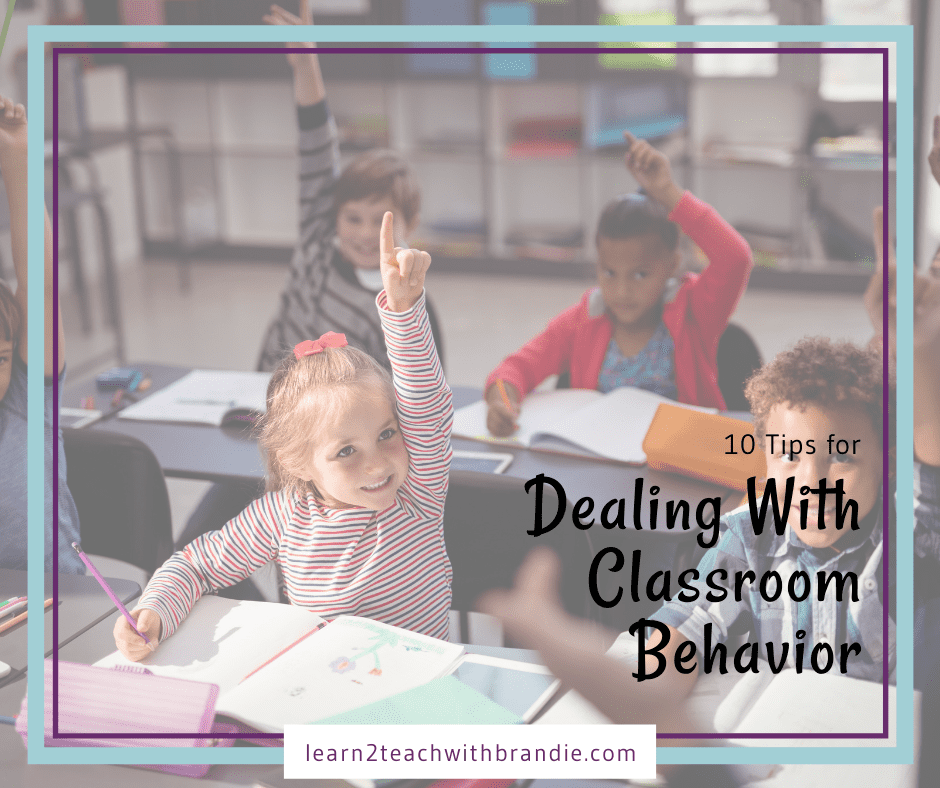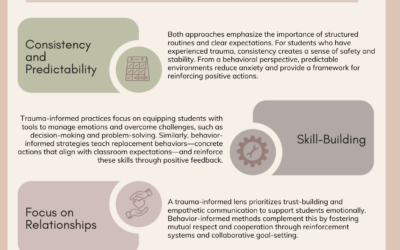Setting up a classroom management/behavior program in your classroom can sometimes feel overwhelming, time consuming and honestly pretty low on that very long “to-do” list. Although having a strong classroom management system is critical to having a successful classroom, sometimes what you really need is a few quick, actionable “tricks” for dealing with classroom behavior in order to keep things rolling and give you time to teach and do all of the other things you need to get done in a day.
10 Quick and Actionable Steps to Dealing with Classroom Behavior
The good news is that there are things you can do to deal with behavior in the moment and keep things under control while you are developing a more comprehensive plan!
Step 1: Reinforce the behaviors you want to see at a very high rate
When dealing with disruptive behavior, there is never TOO much reinforcement. As teachers we often worry that we are going to “spoil” kids with too much reinforcement but in reality, it is one of the fastest and easiest ways to change behavior in the short term and get you back to doing what you love-teaching! Once you have a full system in place or a plan for the specific behavior you are struggling with, you will be able to fade that reinforcement. If it works~use it!
Step 2: Sometimes it’s okay to ignore behaviors
As teachers, sometimes that is really hard for us. I am here to tell you that sometimes it’s okay to ignore behaviors even when you know you need to ultimately deal with them. If it allows you to get through a lesson or get down what you need, it is absolutely okay to ignore. I would actually say it is better to ignore the behavior instead of jumping in without a plan!
Step 3: Any new intervention that you try, give it TWO weeks to see if it works
So many times, we try something for a day or two and declare failure! The truth is, any new program or intervention takes time to work. It takes time for you to work out the bumps and for your students to settle in. If you are going to try a new intervention, give it at least two weeks before you decide if it works or not!
Step 4: Beware of power struggle
I’m not saying that any of us ever do this. 🙂 I’ll let you in on a little secret… we will NEVER win the power struggle. It’s sad but true. What we will get, though, is lost time, frustration, and more overwhelm! Cut your losses, move on and make note to yourself that you will need to get back to that skill or behavior with a plan!
Step 5: Be very clear about which behaviors you expect
So often we expect that our students know exactly what we want from them and while this is true for some kids, it isn’t true for all of them. Some children need things much more defined and clear. Because you don’t know which kids will need, it’s always best practice to take the time to teach the whole class!
Step 6: Reinforce other students that are showing the behavior you want to see
This is one of my favorite “tricks of the trade” to use when dealing with a behavior and don’t have a lot of time to set up a program. Reinforcing another student for doing what you want the other student to do can be a really powerful tool.
Step 7: Choose one behavior
When deciding which behavior to work on, choose the one that disrupts your teaching the most, even if it doesn’t seem like the “worst” behavior. There is no “right” or “wrong” behavior that is most disruptive to you. For some, calling out may be the most disruptive, while another teacher may not be bothered at all. Whatever disrupts your teaching the most, that is the behavior to start with!
Step 8: Keep your expectations reasonable
We can have expectations for our class, but remember, each student is different and each class is different. It is important to be reasonable in what we expect from students. They are where they are and can do what they can do!
Step 9: Be brief when talking to students about behavior
The more we talk, the less kids listen. 🙂 You want to make sure the important message is in the beginning and the message is short! This is definitely a place where more is not better.
Step 10: Be aware of your body language and the message it’s sending to the kids
I am always surprised how much this small change really impacts student behavior. Being aware what are body says, making sure it matches what our words are and that both together show that you are a calm and supportive adult, has such a big impact on behavior.
Remember: Making one small change can make a huge improvement when it comes to dealing with classroom behavior. It won’t fix everything, but even a small improvement can do great things for your classroom!





